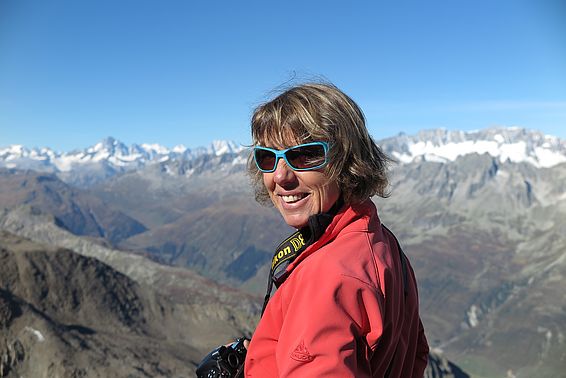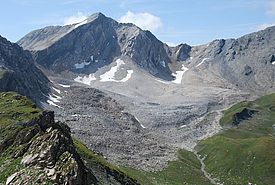11.02.2018 | Rebecca Buchmüller | News SLF
Marcia Phillips, raised in western Switzerland by a British father and a German mother, is as international as the SLF itself. To mark the International Day of Women and Girls in Science, the scientist who was the SLF's first female PhD student and today group leader tells us about her day-to-day research activities, her fascination for permafrost and the advice she has for women wanting to embark on a scientific career.
Ms Phillips, you research permafrost. What exactly does that involve?
Permafrost is permanently frozen ground that is always at or below 0°C. We look and measure whether it's changing, above all checking whether it's warming up, but also whether its ice content is changing and what the consequences of this are. For example, when ice melts, this can trigger slope movement. Or when the permafrost warms up, the topmost layer, which thaws in summer, can thicken, affecting the stability of built structures such as cableways in high mountain regions. We also investigate how climate change is affecting permafrost. Over the last 10 to 20 years we've had more summer heatwaves and snow has fallen later, so the snowpack thickness varies tremendously.
What impact does the snowpack have on permafrost?
A big impact. After all, snow is a mixture of ice, water and air. Like a duvet, this mixture has an insulating effect. The thicker the snow on the ground, the warmer the ground remains, as the heat absorbed during the summer can't escape. So the timing of snowfall is important, but so is the quantitative aspect. If not much or even no snow falls in winter, a huge amount of ground heat can escape, cooling the permafrost, which can in turn stabilise slopes.
And what influence does the climate have?
The climate can affect permafrost either extremely fast or very slowly. When there isn't much ice, just mostly rock, that rock responds very quickly to warming. By contrast, icy ice-rich ground reacts very slowly because it takes a lot of energy to melt ice. This makes changes in the icy permafrost slower.
What's so fascinating about permafrost?
Not all permafrost is the same. For example, there isn't much snow on the ground in the Yukon in Canada, and the ground is much colder there than in the Alps, as well as being fine-grained, with high clay and ice contents. If you want to measure the thickness of the active layer, you simply take a metal rod and ram it into the ground until you reach the ice – something that would be unthinkable in the rocky alpine soils. In summer, the ground thaws, rises and falls, tilting the trees, forming a 'drunken forest'.
What did you study?
I studied physical geography at the University of Lausanne, in other words geomorphology and geography, We studied how landscapes were formed. We were a small, tight-knit group of students who found permafrost particularly fascinating. So in our free time at weekends we used to take measurements with home-made probes. We also compiled a rock glacier inventory for the cantons of Valais and Vaud. We were pretty obsessed with the subject [laughs].
Can you walk through nature these days without seeing rock glaciers everywhere you look?
No, not really. I guess that's an occupational hazard. But I do enjoy it. When I'm out hiking, I always take a camera. People are sometimes surprised when I take a photo of moraine or a rock glacier.
How can you spot a rock glacier?
Rock glaciers are tongue-shaped and look a bit like lava that's flowing through the landscape. Their surface is covered with boulders, and inside they're full of ice, though you can't see it.
Can you describe a typical day of your research?
Well, it depends on the season. In summer we're often out and about. Last year we worked at 26 sites in the Alps. That's a lot of driving and lots of work in mountainous terrain, including dangling from ropes, which is quite a challenge for me as I suffer from extreme vertigo [laughs]. But we're accompanied by an expertly trained mountain guide from the institute. That gives me the security I need. We also have to juggle with the weather, because some measurements, like those made with laser scans, can only be taken when there's clear visibility, whereas others, such as borehole measurements, can also be taken when it's raining or snowing. And we also have to coordinate with other measurement technicians, which involves intensive planning. In autumn and winter we analyse our data and write scientific publications.
What do those measurements involve?
The SLF has 30 instrumented boreholes at 26 sites across the Swiss Alps, where temperature and slope movement measurements are taken every two hours. Many of these data are added to PERMOS, the Swiss Permafrost Monitoring Network, which incidentally is freely accessible online. The longest series of measurements in Switzerland covers a time span of 32 years. Like slopes, boreholes become deformed, so we have to service their instruments once a year. It's no easy task ensuring that instruments last so long, especially in the mountains, where they're totally at the mercy of the forces of nature. Fortunately, we've got some very good electronics technicians at the SLF. They build these instruments and help me with any troubleshooting.
Where do the practical findings of your research end up?
Our work is all about monitoring, not surveillance or warnings. We make observations and draw conclusions from our measurement data. If we notice anything out of the ordinary, we alert the relevant authorities and any engineering firms involved. For example, in the summer of 2018, there was a debris flow in Valais from the Ritigraben rock glacier, which we've been measuring and observing for a long time. That spring, we already noticed that a huge amount of material had accumulated in the steep area at the rock glacier front. We informed the authorities early enough, and their warning systems worked well.
The SLF has many different research units. Do you also exchange information?
Yes, of course. Permafrost is highly dependent on the snowpack, a topic fortunately covered by various research groups at the institute. My team not only includes a senior member of PERMOS and a surveyor, but also a snow climatologist who's supervising a PhD student. The time when snow falls and vanishes is very important. Statistics gathered over many years show that snowfall is occurring ever later, which annoys skiers of course but is good for permafrost. Unfortunately, the snow is also disappearing earlier in spring, removing the insulating snowpack, so the permafrost warms up, destabilising the ground and slopes. We also exchange instrumental expertise: the Avalanche Dynamics research group takes drone photos for us, and in return we perform laser scans for them. For example, we investigate avalanche defence structures in permafrost and also collaborate very closely with the Avalanche Protection Measures group. Furthermore, rock falls are modelled using the RAMMS software developed at the SLF.
Until 1996, the SLF had its headquarters on the Weissfluhjoch. You yourself worked there. What was it like working at an altitude of 2,670 metres on a daily basis?
It was great! Indeed, it had been my dream: in an essay I wrote when I was eight, I mentioned that some day I'd like to work on the Weissfluhjoch. And that's where I ended up! It was wonderful, though I must say I had the impression that my brain cells worked slightly less efficiently up there [laughs]. You notice the altitude a bit, and above all feel very hungry. I only worked there for just over half a year, but I made the most of it, doing everything from downhill skiing to hiking up to the summit at sunrise in summer. It was a really great experience.
SLF films from the 1940s show women cooking and cleaning for the scientists – and even waxing their skis. How have things changed?
In 1996, I was the SLF's first female PhD student, and was given a very warm reception, although some eyebrows were raised at the idea of studying permafrost here, I was immediately allowed to do snow profiles and attend observer courses. My colleagues were extremely open. Today, even though there are far more female researchers at the institute, somehow things seem more difficult. No doubt I had the advantage of being rather a curiosity at the time. The Swiss Federal Institute of Technology (ETH) has set up the Fix the Leaky Pipeline programme to give women prospects in the research domain.
So far you're the only woman in the SLF's team of scientific group leaders. What's your advice for women who want to make a career in science?
Go abroad after your PhD! After my doctoral thesis, I didn't really want to go abroad either. At that stage, you finally want to start earning some money and settle down. But my subsequent postdoctoral research in Canada opened up a lot of new doors for me and showed me the scientific path that led me back to Davos.
Talking of Davos, do you like it here?
I'm not that keen on Davos itself, which is why I live in Monstein. But I feel it's a great privilege for me to live and work in a place where others come to spend their holidays. Here I can simply step outside and go cross-country skiing, hiking or ski touring. By contrast, walking along Bahnhofstrasse in Zurich on a Saturday makes me feel as if I've climbed Mount Everest [laughs loudly]. And I always look forward to returning here after meetings, because the air in the lowlands is stifling. I need nature and the lightness of the fresh alpine air.
That's what female WSL researchers say about the International Women's Day in Science
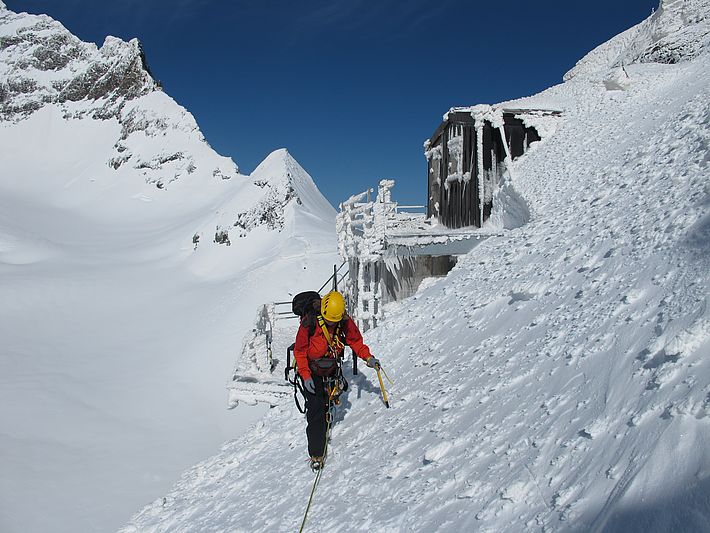
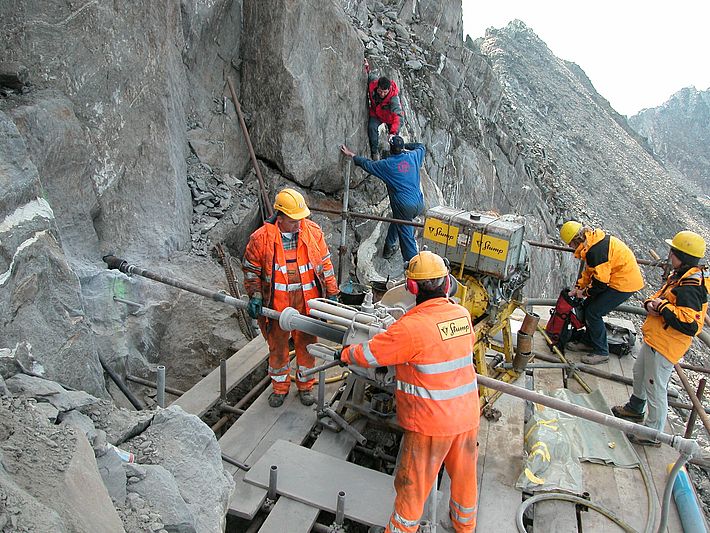
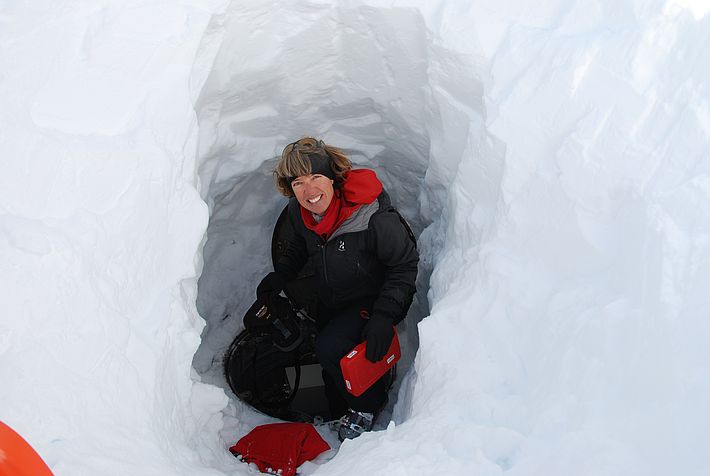
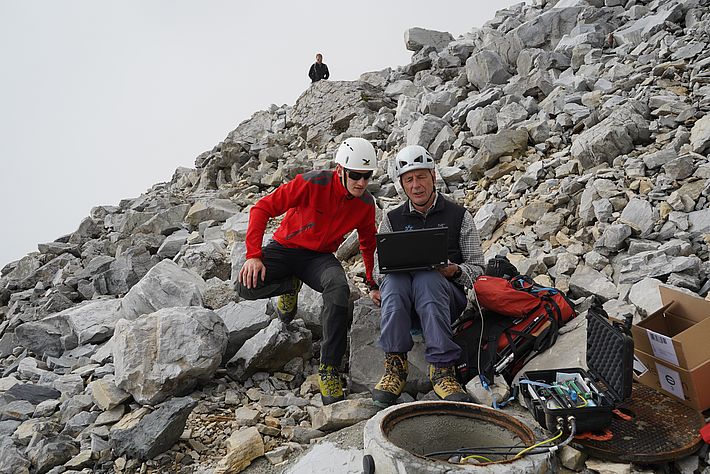
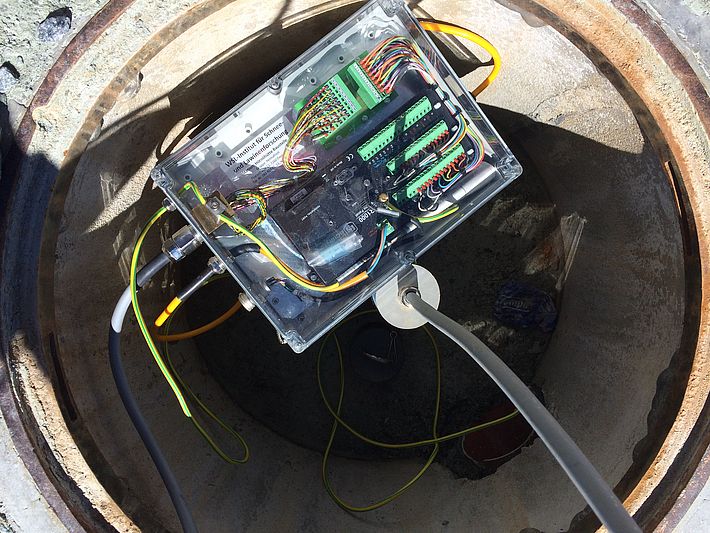
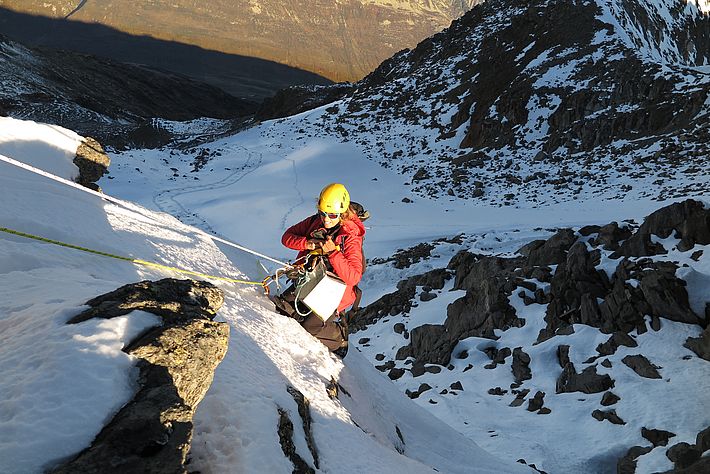
Contact
Copyright
WSL and SLF provide the artwork for imaging of press articles relating to this media release for free. Transferring and saving the images in image databases and saving of images by third parties is not allowed.
